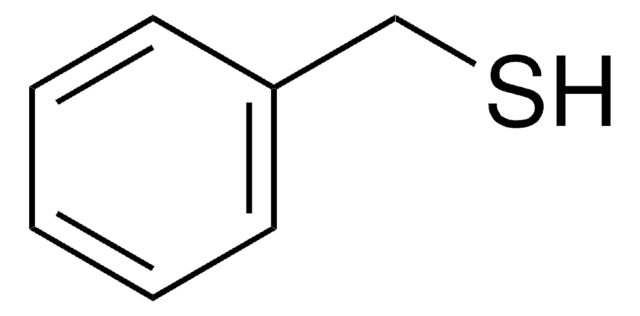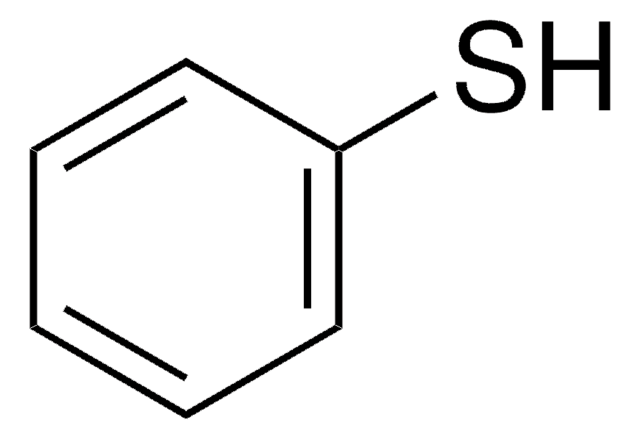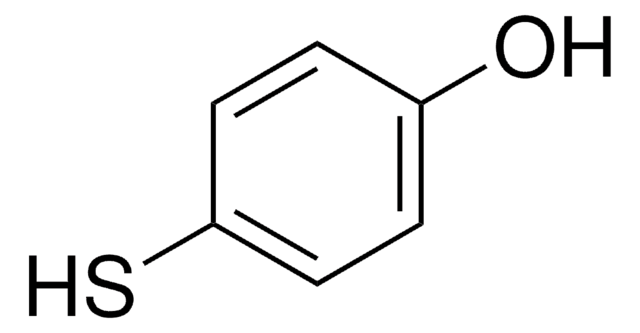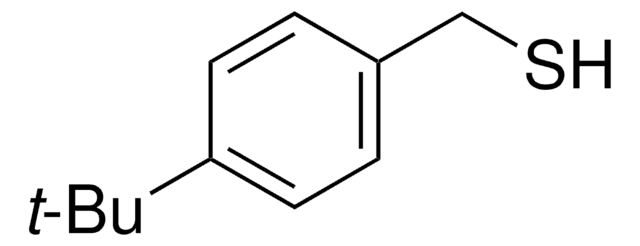Key Documents
W214701
Benzyl mercaptan
99%, FG
Synonim(y):
α-Toluenethiol, α-Tolyl mercaptan, Benzenemethanethiol
About This Item
Polecane produkty
pochodzenie biologiczne
synthetic
Poziom jakości
klasa czystości
FG
Kosher
agency
meets purity specifications of JECFA
zgodność regionalna
EU Regulation 1334/2008 & 178/2002
FDA 21 CFR 117
FDA 21 CFR 172.515
gęstość pary
>4 (vs air)
Próba
99%
zanieczyszczenia
≤0.0890% Toluene, residual
współczynnik refrakcji
n20/D 1.575 (lit.)
tw
194-195 °C (lit.)
gęstość
1.058 g/mL at 25 °C (lit.)
Zastosowanie
flavors and fragrances
Dokumentacja
see Safety & Documentation for available documents
alergen pokarmowy
no known allergens
Organoleptyczne
garlic; onion; alliaceous; sulfurous
ciąg SMILES
SCc1ccccc1
InChI
1S/C7H8S/c8-6-7-4-2-1-3-5-7/h1-5,8H,6H2
Klucz InChI
UENWRTRMUIOCKN-UHFFFAOYSA-N
Szukasz podobnych produktów? Odwiedź Przewodnik dotyczący porównywania produktów
Zastosowanie
- Anaerobic degradation of thiobencarb by mixed culture of isolated bacteria.: This research focuses on the anaerobic degradation of thiobencarb, a thiol-related compound, by a mixed culture of bacteria, highlighting potential bioremediation applications (Duc et al., 2023).
- Amphiphilic polymer-encapsulated Au nanoclusters with enhanced emission and stability for highly selective detection of hypochlorous acid.: This study demonstrates the use of amphiphilic polymer-encapsulated gold nanoclusters for the selective detection of hypochlorous acid, indicating potential applications in environmental monitoring and chemical sensing (Li et al., 2021).
Hasło ostrzegawcze
Danger
Zwroty wskazujące rodzaj zagrożenia
Zwroty wskazujące środki ostrożności
Klasyfikacja zagrożeń
Acute Tox. 2 Inhalation - Acute Tox. 4 Oral - Aquatic Acute 1 - Aquatic Chronic 1
Kod klasy składowania
6.1A - Combustible acute toxic Cat. 1 and 2 / very toxic hazardous materials
Klasa zagrożenia wodnego (WGK)
WGK 3
Temperatura zapłonu (°F)
158.0 °F - closed cup
Temperatura zapłonu (°C)
70 °C - closed cup
Środki ochrony indywidualnej
Eyeshields, Faceshields, Gloves, type ABEK (EN14387) respirator filter
Wybierz jedną z najnowszych wersji:
Masz już ten produkt?
Dokumenty związane z niedawno zakupionymi produktami zostały zamieszczone w Bibliotece dokumentów.
Nasz zespół naukowców ma doświadczenie we wszystkich obszarach badań, w tym w naukach przyrodniczych, materiałoznawstwie, syntezie chemicznej, chromatografii, analityce i wielu innych dziedzinach.
Skontaktuj się z zespołem ds. pomocy technicznej







